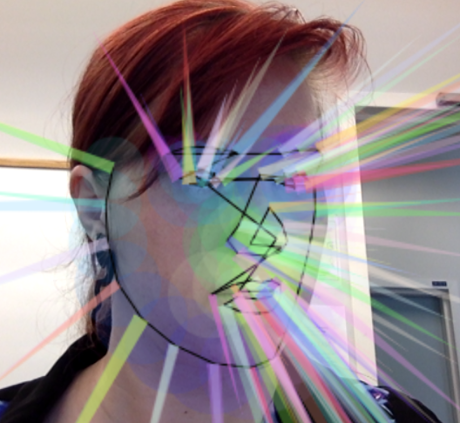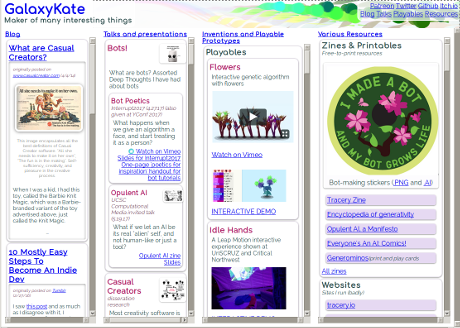Before you skip this post as just being about “pretty images,” know that generators span grammars to constraint solvers. Artistry for sure, but exploration can lead to hard core CS rather quickly.
I stumbled upon a @GalaxyKate‘s Generative Art & Procedural Content Starter Kit
Practical Procedural Generation for Everyone: Thirty or so minutes on YouTube, 86,133 views when I checked the link.
So you want to build a generator: In depth blog post with lots of content and links.
Encyclopedia of Generativity: As far as I can tell, a one issue zine by @GalaxyKate but it will take months to explore.
One resource I found while chasing these links was: Procedural Generation.
Oh, and you owe it to yourself to visit GalaxyKate’s homepage:
The small scale of my blog presentation makes that screenshot a pale imitation of what you will find. Great resource!
There’s no shortage of visual content on the Web, one estimate says in 2017, 74% of all internet traffic was video.
Still, if you practice steganographic concealment of information, you should make the work of the hounds as difficult as possible. Generators are an obvious way of working towards that goal.
One secure message tip: Other than for propaganda, which you want discovered and read, omit any greetings, closings, or other rote content, such as blessings, religious quotes, etc.
The famous German Enigma was broken by messages having the same opening text, routine information, closing text (Heil Hitler!), sending the same message in different encodings. Exploring the Enigma
Or in other words, Don’t repeat famous cryptographic mistakes!


 Both Lisan al-‘Arab (about 20,000 pages) and Lane’s Arabic-English Lexicon (about 8,000+ pages) are online now.
Both Lisan al-‘Arab (about 20,000 pages) and Lane’s Arabic-English Lexicon (about 8,000+ pages) are online now.